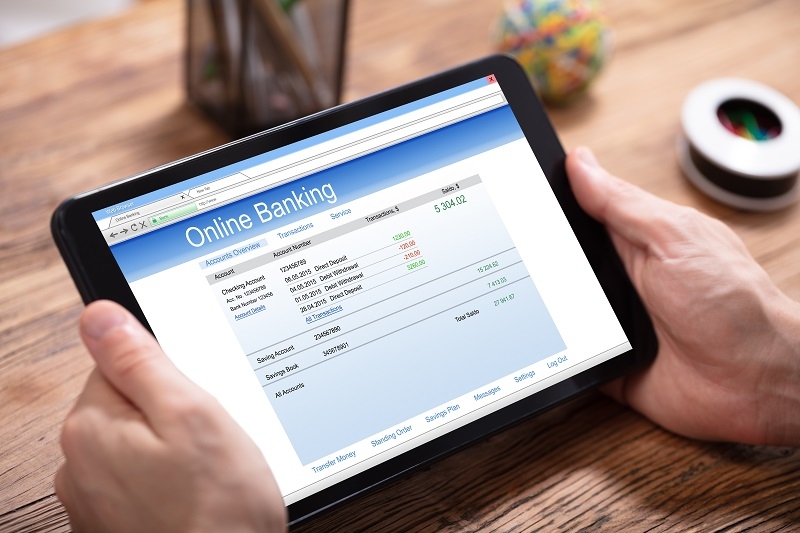Learn Online Bank Statements – What Americans Should Know

In these days’ virtual-first world, online bank statements have become a monetary critical for tens of millions of Americans. From tracking spending to recognizing suspicious charges, these statements are filled with crucial facts. But for plenty, they can feel like an economic maze. If you’ve ever opened your digital assertion and felt overwhelmed by the codes, figures, and sections, you’re no longer alone.
Understanding the way to read virtual financial institution statements and gaining knowledge of U.S. Online account announcement terminology can empower you to stay on top of things of your finances, catch errors, keep away from prices, and build better budgeting behavior. Whether you’re a university pupil managing your first bank account or a running expert aiming to reconcile transactions more accurately, this manual will damage all of it all down in a clean and approachable way.
Why Online Bank Statements Matter
The convenience of online bank statements has revolutionized personal finance within the U.S. Gone are the days of paper mail and guide monitoring. Digital statements offer:
- 24/7 access to your financial interests
- Real-time notifications for unusual spending
- Tools for categorizing transactions electronically
- Easy sharing with tax experts or accountants
Despite their accessibility, many customers don’t completely make use of these documents because of unfamiliarity with monetary terms or codes. But understanding your statement may help prevent high-priced errors.
Understanding U.S. Online Account Statement Terminology
To make sense of your bank’s digital statements, start by familiarizing yourself with not-unusual U.S. Online account announcement terminology. Here's a breakdown of key terms you'll come across:
1. Statement Period
This is the timeframe your statement covers, typically one month. It generally starts offevolved and ends on the same day each month—like the 1st to the thirty first.
2. Beginning and Ending Balance
- Beginning balance is how a lot deposited to your account at the beginning of the period.
- Ending stability is what’s left after all transactions are carried out.
3. Available Balance
This is the quantity you may use without delay, factoring in pending transactions and holds.
4. Pending Transactions
These are purchases or withdrawals that haven’t absolutely processed but will quickly reflect on your online financial institution statements.
5. Credits and Debits
- Debits are amounts that have been subtracted, inclusive of bills or withdrawals.
- Additions to your account, including deposits or reimbursements, are called credits.
It is vital to recognise this jargon at the same time as the use of the monthly statement reconciliation suggestions and taking proactive measures with your money.
How to Read Digital Bank Statements Without Confusion
Learning how to study virtual bank statements is a talent that will pay off. Here’s a step-by-step method for reviewing your announcement:
- Step 1: Confirm the Statement Period: Always check the date range first to ensure you’re reviewing the best month’s interest.
- Step 2: Verify the Starting and Ending Balances: These numbers help you notice massive discrepancies. If your finishing balance seems off, you’ll understand to look deeper.
- Step 3: Scan for Large or Unfamiliar Transactions: Unrecognized charges will be a sign of fraud. Mark them for follow-up compliance.
- Step 4: Verify Your Records Again: To suit each entry, use your non-public finance tools, budgeting apps, or receipts.
- Step 5: Look for Charges
- Determine the expenses that are indicated in statements, like:
- ATM usage fees and overdraft costs
- Minimum penalties for stability
- Carrier fees per month
Knowing these will help you make the necessary corrections, move to a no-charge account, or maintain the minimal amount.
Categorizing Transactions Electronically for Better Budgeting
Modern online banking platforms allow for categorizing transactions electronically, which is a game-changer for budgeting and rate monitoring.
Benefits of Categorization:
- Helps become aware of spending patterns (e.g., an excessive amount on eating out)
- Makes tax time less complicated (mainly for freelancers and business proprietors)
- Allows for better financial planning and saving
Most U.S. Banking apps can help you customise classes like “Groceries,” “Utilities,” “Entertainment,” and “Rent.” Once you’ve set those up, your online bank statements turn out to be dynamic equipment that reflect your way of life and economic priorities.

Spotting and Understanding Fees Highlighted in Statements
Bank prices are frequently small but can quietly drain your funds over time. That’s why it's critical to recognize how costs are highlighted in statements and the way to avoid them.
Common Fees You’ll Encounter:
- Overdraft costs are charged when you spend more money than what’s available on your account. You can avoid them with the aid of putting in overdraft protection.
- ATM charges apply while you use an ATM that isn’t part of your financial institution’s community. To avoid those, continually use ATMs inside your bank’s community.
- Maintenance expenses are monthly expenses for keeping your account open. You can frequently keep away from them through maintaining a minimum balance or putting in place direct deposit.
- Wire transfer fees are charged for sending or receiving domestic or worldwide wire transfers. To avoid them for small amounts, consider the usage of alternative fee apps.
Always assess the “Fee Summary” or similar phase of your online bank statements and query any unfamiliar charges.
Monthly Statement Reconciliation Tips to Stay in Control
Reconciling your bank statement way evaluating the statement along with your non-public economic records to make certain the whole thing suits. Here are a few clever monthly assertion reconciliation guidelines:
- Tip 1: Reconcile Regularly: Do this month-to-month (or bi-weekly in case you're monitoring carefully). This enables us to address issues at an early stage.
- Tip 2: Make Use of Apps or Software to reconcile your transactions with your online financial organization statements, use a system such as Excel, YNAB, or Mint.
- Tip 3: Highlight inconsistencies Instantly: Get in touch with your financial institution right away if something doesn't seem right, such as an unrecognized transaction, an inaccurate amount, or a missing credit score.
- Tip 4: Maintain supporting documentation: Save confirmation emails or receipts for significant purchases or automatically generated invoices. For validation, they are helpful.
- Tip 5: Examine Categories: Make sure the transactions you have labeled are accurate. Your assessment of spending may be distorted by misclassifications.
Security Considerations When Accessing Online Bank Statements
With a majority of these economic records online, protection is essential. Here's the manner to stay secure:
- Use sturdy passwords and two-factor authentication
- Avoid public Wi-Fi whilst gaining access to banking apps
- Regularly update your gadgets and banking apps
- Set up signals for login attempts and large transactions
Knowing the way to look at digital bank statements is most beneficial if your statistics are steady.
Benefits of Mastering Your Online Bank Statements
Taking the time to understand your online bank statements will pay off in multiple ways:
- Prevents fraud by way of spotting suspicious activity early
- Improves budgeting via rate tracking
- Boosts monetary recognition, main to better decision-making
- Avoids hidden fees that silently lessen your balance
- Helps with credit control whilst you tune your mortgage payments correctly
It additionally gives you confidence while handling monetary establishments or applying for credit, mortgages, or even loans.
Pro Tips to Simplify Your Online Banking Routine
- Set a reminder to review your announcement each month—mark your calendar.
- At some point throughout tax season, download and save your statements in a reliable cloud folder for easy access.
- To be informed of every account movement, sign up for mail or text alerts.
- Review your categorization rules for every region—your spending habits may change!
- If you run a side commercial enterprise, separate your transactions into debts to maintain non-public and commercial enterprise prices cleanly divided.
Final Thoughts on Online Bank Statements
In an international world wherein virtual bills are the norm and banking is only a faucet away, information about your line of financial institution statements is not optional—it’s a monetary ought to. Once you become fluent in U.S. Online account declaration terminology and observe strong month-to-month statement reconciliation guidelines, you'll gain control, self-belief, and readability of your budget.
From categorizing transactions electronically to spotting expenses highlighted in statements, every element in your virtual statement tells a story approximately your cash habits. Learn to read that tale in reality, and you’ll also be properly on your way to smarter economic alternatives.
This content was created by AI

